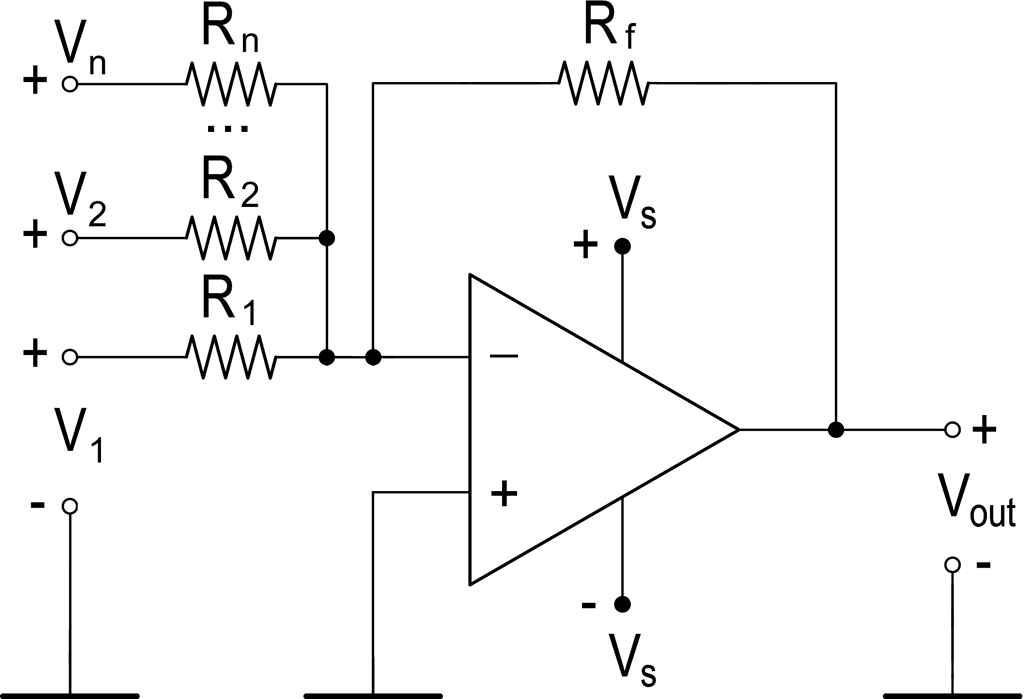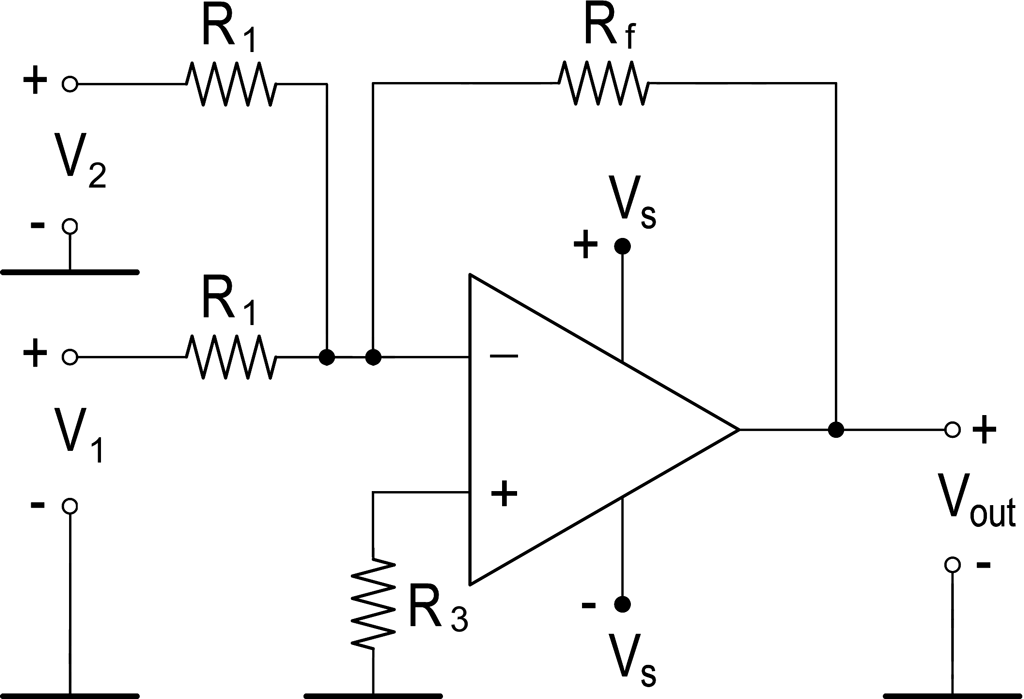| www.tmatlantic.com
Test & Soldering Equipment On-line Store |
|
D.E.V.I.C.E. (Wiki)Calculators Services |
|||||
Filter by first letter
|
Summing amplifier - inverting amplifier-summerA summing amplifier based on an operational amplifier is most often built on the basis of an inverting amplifier and is shown in Fig. 1 and 2.
At the output of the summing amplifier, the voltage (Vout) is formed, as the sum of the input voltages according to the formulas: 1. In general form: Vout = Rf × (V1 / R1 + V2 / R2 + + Vn / Rn) 2. For the case R1=R2= =Rn, then: Vout = (Rf / R1) × (V1 + V2 + + Vn) 3. For the case R1=R2= =Rn=Rf, then: Vout = (V1 + V2 + + Vn) The resistance of resistor R3, connected to the non-inverting input of the op-amp to compensate for the bias current (Fig. 2), is equal to the resistance of the resistor in the feedback circuit, connected in parallel. For the correct operation of the summing element, the signal sources must have the lowest possible output resistance, so that the calculation result is not affected by the low input resistance of the element, and the signal sources do not shunt each other. Use our online Summing Amplifier Calculator. |
Site mapPrivacy policyTerms of Use & Store PoliciesHow to BuyShippingPayment




|



























